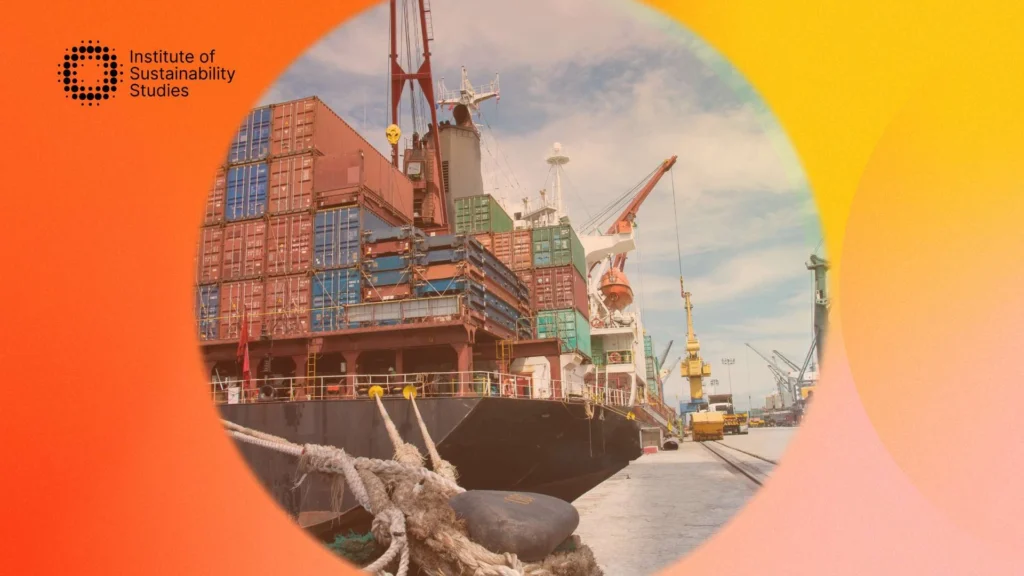In a move that initially reignited global trade tensions, President Trump announced sweeping new tariffs targeting imports from 57 countries. These included a staggering 104 percent levy on Chinese goods and steep increases for imports from the EU, India, and Brazil. But just hours later, in a surprise pivot, nearly all the Trump tariffs were paused for 90 days, causing stock markets to surge by 9.5 percent before close.
The market chaos, however, isn’t just about short-term investor sentiment. For businesses, the volatility sends a clear message: build resilient, sustainable supply chains now or risk being left exposed. Keep reading to explore the implications and how those with diversified, business sustainability strategies will weather these shocks more effectively.
What’s behind the Trump tariffs—and the pause?
The original tariffs, announced on April 9th, 2025, were positioned as part of Trump’s renewed “America First” agenda, aimed at reviving domestic manufacturing and reducing reliance on foreign producers. Sectors impacted included electronics, automotive parts, machinery, and consumer goods.
But on Wednesday morning, just hours after posting on his social media platform Truth Social that it was “a great time to buy,” Trump suddenly announced a 90-day pause on nearly all tariffs. While the White House stated the president was simply “reassuring the markets,” ethics experts have raised concerns that the timing may constitute market manipulation. Regardless, the episode has thrown global markets and business leaders into a state of heightened uncertainty.
The threat of tariffs may be temporarily on hold, but the instability they represent is here to stay. For businesses, especially in manufacturing, retail, and tech, the underlying vulnerabilities in complex global supply chains remain unchanged. From disrupted sourcing to erratic shipping costs and fluctuating input prices, companies now face a growing list of risks. Whether driven by trade policy, climate shocks, or geopolitical tensions, it’s clear that traditional, linear supply chains are no longer fit for purpose.
This episode is just the latest in a string of unpredictable policy actions, following closely behind Trump’s new executive order targeting state-level climate policies. That order, which aims to dismantle climate regulations referencing ESG or carbon limits, underscores the administration’s increasingly combative stance on environmental governance
Build sustainability capability across your organisation with flexible, expert-led online training
The fallout for business: Vulnerabilities exposed
For many businesses, particularly in manufacturing, retail, and technology, the Trump tariffs triggered immediate concern. Even though a 90-day pause is now in place, the sudden reversal highlights the unpredictability of trade policy under the current administration.
Firms reliant on global supply chains are reminded how quickly access to key materials or components can be disrupted. The whiplash of new tariffs followed by a short-term freeze underscores a volatile regulatory landscape where long-term planning is increasingly difficult.
This uncertainty puts businesses under pressure to future-proof operations. Beyond pricing implications, there’s reputational risk – product delays, stockouts, and price hikes can damage customer trust and expose operational fragilities.
This is not a one-off scenario. From the pandemic and Ukraine war to semiconductor shortages and Red Sea disruptions, businesses have faced mounting supply chain shocks over the past five years. The Trump tariffs, paused or not, reinforce the urgency of moving away from brittle, linear models toward resilient, sustainable supply chains that can withstand disruption.
Building resilience through sustainability
While headlines focus on geopolitics, the deeper lesson is strategic: businesses that embed sustainability into their supply chains aren’t just reacting to risk, they’re building future-ready operations. A resilient supply chain goes beyond having contingency plans. It means rethinking how materials are sourced, how waste is reduced, and how supplier relationships are managed. Circularity, localisation, and transparency are strategic imperatives.
Circular supply chains can reduce material and production costs by up to 70 percent. Moreover, local sourcing cuts transport emissions and insulates operations from global volatility. Meanwhile, digital tools that enable supplier traceability allow businesses to act quickly in the face of disruption. These policy shifts are happening overnight, but sustainable supply chains are emerging as a defining trait of agile, competitive businesses.
Conclusion – Sustainability is a value driver, not just compliance
The Trump tariffs may have been paused, but the message is clear: external shocks, whether political, environmental, or economic, are not going away. In fact, supply chain disturbances are expected to grow as the climate crisis accelerates and geopolitical tensions continue. We’ve already seen the fallout through the pandemic, the war in Ukraine, and Red Sea disruptions, and climate-related risks will only intensify.
In this volatile landscape, resilience is emerging as a strategic advantage. Businesses that embed sustainable sourcing, circular economy principles, and supply chain transparency are not just managing risk but creating long-term value. These organisations will be better equipped to navigate shifting regulations, stakeholder expectations, and climate impacts.
Explore our corporate sustainability training solutions to build the internal capability your organisation needs to future-proof operations and lead in a low-carbon, high-accountability economy.
Dedicated to harnessing the power of storytelling to raise awareness, demystify, and drive behavioural change, Bronagh works as the Communications & Content Manager at the Institute of Sustainability Studies. Alongside her work with ISS, Bronagh contributes articles to several news media publications on sustainability and mental health.
- Bronagh Loughlinhttps://instituteofsustainabilitystudies.com/insights/author/bronagh/
- Bronagh Loughlinhttps://instituteofsustainabilitystudies.com/insights/author/bronagh/
- Bronagh Loughlinhttps://instituteofsustainabilitystudies.com/insights/author/bronagh/
- Bronagh Loughlinhttps://instituteofsustainabilitystudies.com/insights/author/bronagh/











